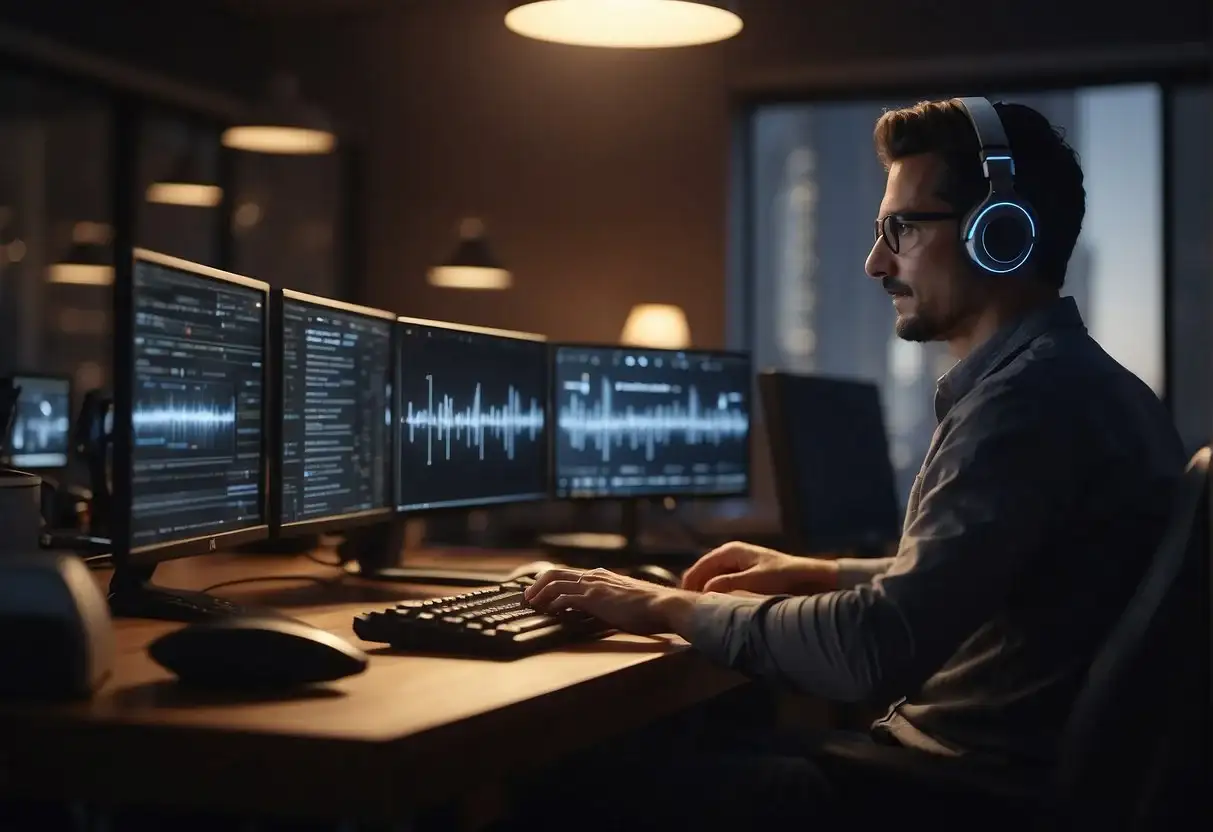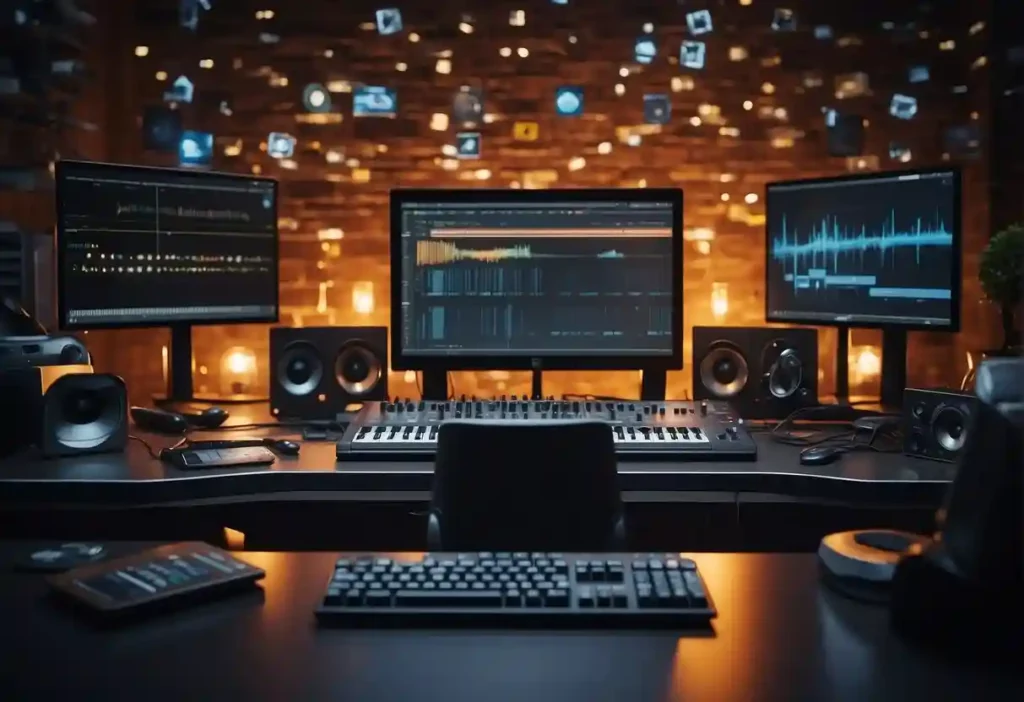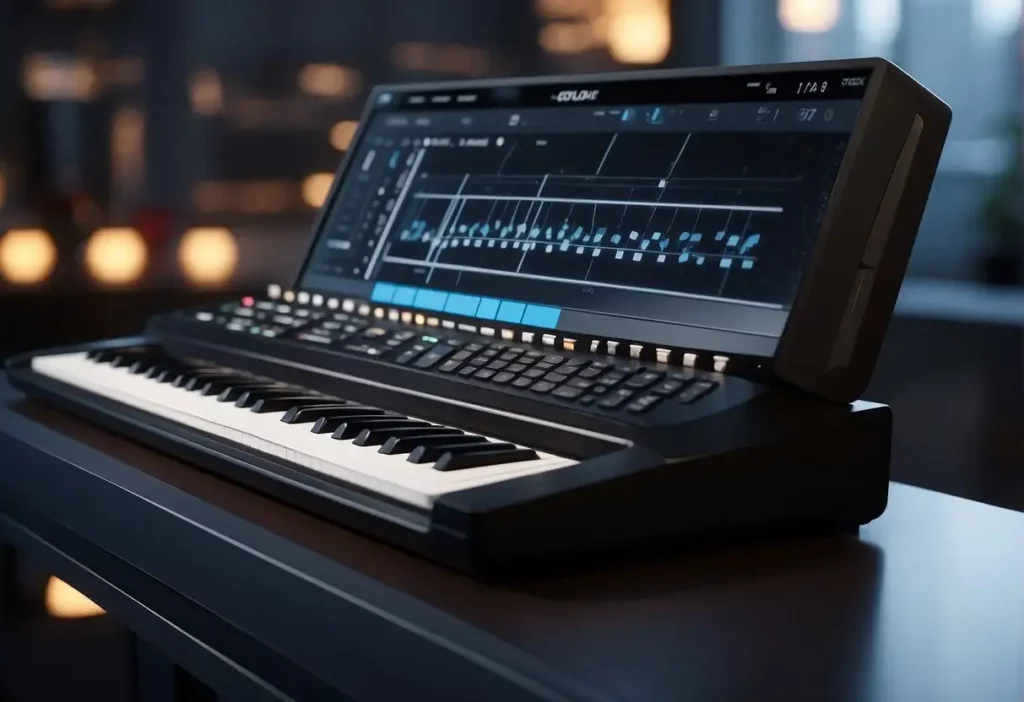How to Create Songs with Microsoft Copilot AI: A Step-by-Step Guide

Microsoft Copilot AI is at the forefront of this revolution, providing budding and established musicians alike with the tools necessary to harness AI for creating songs.
This innovative system not only streamlines the songwriting process but also opens up a realm of creative possibilities previously unattainable without the collaboration of AI technology.
Understanding how to effectively collaborate with Microsoft Copilot AI for songwriting requires a solid grasp of both technical setup and creative execution.
Setting up your workspace properly ensures a seamless interaction with the AI, allowing you to focus on the more artistic aspects of song creation.
With the basics of songwriting in mind, artists can leverage the AI’s capabilities to elevate their music, crafting pieces that resonate with listeners and stand out in the modern music landscape.
Key Takeaways
- Microsoft Copilot AI facilitates a new era of music composition by integrating artificial intelligence into the songwriting process.
- A properly configured workspace is essential for an efficient and smooth songwriting experience with Copilot AI.
- Copilot AI serves as a creative partner that can contribute to the uniqueness and emotional depth of the songs created.
Understanding Microsoft Copilot AI

Microsoft Copilot AI is an advanced tool designed to augment the creative process in music, providing a suite of functionalities to assist songwriters.
Capabilities of Microsoft Copilot AI
Microsoft Copilot AI exhibits a range of capabilities that cater to various aspects of song creation. These include, but are not limited to:
- Lyric Generation: It can suggest lyrics based on given themes or emotions, utilizing natural language processing to ensure coherence and relevance.
- Chord Progression Suggestions: The AI offers chord progressions that complement the generated lyrics and desired mood of the song.
- Melody Creation: It develops melodies that can be used as a foundation for compositions or as inspiration for further refinement.
AI Integration in Songwriting
The integration of Microsoft Copilot AI into songwriting signifies a seamless collaboration between human creativity and artificial intelligence. It operates through the following methods:
- Collaborative Interaction: Songwriters interact with the AI in real-time, providing inputs and refining the outputs to ensure the final product aligns with their vision.
- Data-Driven Feedback: The AI analyzes feedback from the user to learn and adapt, thus improving the quality of its suggestions over time.
Setting Up Your Workspace

When creating songs with Microsoft Copilot AI, it is essential to prepare an efficient workspace by ensuring system compatibility and executing a proper setup of the software.
System Requirements
- Operating System: Windows 10 or higher, macOS Mojave or higher
- Processor: Minimum Intel Core i5 or equivalent
- RAM: At least 8 GB
- Storage: Minimum 10 GB of free space
- Audio Interface: Compatible with ASIO or WASAPI drivers
- Internet: Required for installation and updates
Installation and Configuration
- Acquire Microsoft Copilot AI: Visit the official Microsoft Copilot AI website and purchase or subscribe to the software.
- Download and Install:
- Navigate to the ‘Downloads’ section of the site.
- Select the version compatible with your operating system.
- Follow the on-screen instructions to install the software.
- Software Configuration:
- Open Microsoft Copilot AI.
- Go to ‘Settings’ and select ‘Audio/MIDI Setup’.
- Configure your audio interface and MIDI controller settings.
- Set the sample rate and buffer size to optimize performance.
Songwriting Basics with Microsoft Copilot AI

Creating songs with Microsoft Copilot AI combines traditional songwriting techniques with advanced technology. To write songs effectively, understanding song structure and lyric writing is key.
Song Structure Fundamentals
Songwriting begins with establishing a solid structure. A typical song structure consists of:
- Verse: Introduces the listener to the song’s themes and melodies.
- Chorus: The hook or main idea, designed to be catchy and memorable.
- Bridge: Offers contrast to the verse and chorus, often with a shift in tempo or key.
Creating a balanced structure is crucial for maintaining listener interest.
Lyric Writing Techniques
Effective lyrics convey emotions and tell a story. Here are some tips:
- Use imagery and metaphors to add depth to your lyrics.
- Employ rhyme schemes like AABB, ABAB, or ABCB to enhance musicality.
- Maintain a consistent theme throughout the song to connect with listeners.
When writing lyrics, one should also pay attention to the number of syllables per line to ensure a smooth melody when paired with music.
Utilizing Copilot AI for Creativity

Microsoft Copilot AI serves as a dynamic tool for musicians, offering innovative ways to generate, refine, and collaborate on musical projects.
Generating Musical Ideas
Copilot AI excels in sparking inspiration by providing musical templates, which users can select based on genre, mood, or instrumentation.
Musicians may input initial parameters, such as a chord progression or a rhythm pattern, prompting the AI to generate various musical ideas.
Copilot AI’s algorithms then suggest a range of options such as melodies, harmonies, and rhythms, which serve as a creative launchpad.
Refining Melodies and Lyrics
Once an idea takes form, Copilot AI aids in the refinement of melodies and lyrics. Users can adjust melodies by modifying key signatures, tempos, and note sequences.
For lyrics, the AI offers rhyme schemes, word choices, and thematic suggestions that align with the song’s tone. Using natural language processing, Copilot AI evaluates lyrical flow and suggests edits for a polished result.
Workflows and Collaboration
Efficiency in workflows is enhanced as Copilot AI integrates into digital audio workstations (DAWs), providing real-time assistance.
It supports various file formats, allowing seamless exchange between collaborators, regardless of their preferred software. For teams, Copilot AI facilitates the merging of individual contributions by analyzing compatibility and suggesting adjustments for cohesion.
Finalizing Your Song With Microsoft Copilot Ai

Finalizing a song involves meticulous editing and arranging, followed by exportation in a suitable format for distribution.
Editing and Arrangement Tips
When editing and arranging a song in Microsoft Copilot AI, it is crucial to focus on the following:
- Structure: Ensure that verses, choruses, and bridges transition smoothly. Sequence sections logically.
- Timing: Fix any timing issues with quantization features to align notes and beats precisely.
- Dynamics: Check levels and automate volume changes for emphasis or subtlety.
- Effects: Apply effects judiciously and adjust parameters until they complement the song.
Exporting the Final Product
To export your final song:
- Choose the appropriate file format:
- WAV or AIFF for lossless quality.
- MP3 or AAC for compressed files.
- Select a bitrate that balances size and quality; 320 kbps is a common choice for MP3s.
- Confirm all tracks are properly mixed down to a stereo or mono file.
- Utilize dithering if converting from a higher to a lower bitrate.
